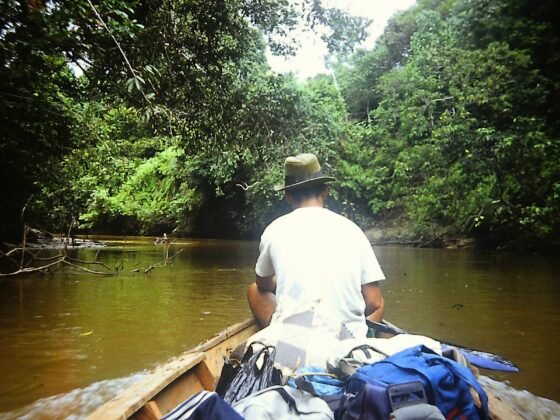Becoming a hiker, you know that you’re going to be moving around across different terrain, the day will keep going, and the temperatures will drop as the day gets long. You don’t have to be scaling a local mountain to feel the cold begin to bite. Certainly, you cannot control the weather conditions or the temperature outside, but there are steps you can take ahead of time to mitigate the cold when it comes on.
It’s best to take measures to handle the weather and not get caught unprepared. Here are a few ways to deal with it effectively when out hiking, camping or mountain climbing.
Getting the Sleeping Bag Rating Right
When cold weather camping, having a sleeping bag rated properly for how cold the nights will get is important to not have your body temperature drop dangerously low. We all have a different temperature that we’re comfortable with when sleeping. When the comforter is necessary in late spring, then you need to stay warmer than other people; your sleeping bag choice must reflect this reality.
To stay safe, it’s advisable that you own a sleeping bag that has a rating for 10-15-degrees Fahrenheit below what you expect the temperatures to be. This guide “19 Tips to Stay Warm While Sleeping in Cold Weather” suggests bags that are rated at 20, or even 33 degrees F. Be sure to check the weather forecast before you leave too. If you camp in different weather conditions, do what regular hikers do and own more than one sleeping bag, so you can choose the right one for the season to bring along with you.
Use Special Clothes for Sleeping In
Whether you normally sleep in pajamas or shorts, when you’re out camping or hiking, you’ll be glad that you packed some clean clothes to wear while in your sleeping bag. The items should fit you loosely to allow the body to adjust naturally and should be unrestricted. When you own a different set of clothing to sleep in, it will stay clean during the trip which allows the insulation to keep working.
Also, consider using a layered clothing approach to night clothes and probably daytime ones too. The advantage of using layers is that a single layer can be removed to adjust your warmth level without needing to completely change your outfit.
Keep Up Your Eating & Water Consumption
When processing food, the body automatically heats up from its internal activities. Therefore, when you eat when out hiking and camping, you keep warmer than if you forget to eat or skip a meal. Drinking plenty of liquids also helps to stay hydrated. Water is used in the muscles and throughout the body to better maintain your average temperature like a thermostat. With too few liquids consumed, the body has a harder time regulating heat levels, especially when combating a cold night.
Cover Your Extremities
Heat rises, and most of the heat in your body escapes through your head. When you’re facing a particularly cold night, wearing a woolly hat is a good defense against losing body heat quickly. This is especially true when climbing into a cold sleeping bag for the first time and needing to warm it up from your own body heat.
If you have a tendency to get cold feet, then wearing thermal socks inside the sleeping bag, at least until the feet are at a comfortable temperature, is never a bad idea. These should be a fresh pair of socks and not ones used during the day.
Avoid sleeping with the sleeping bag right up against the tent wall. Heat transfers over to cold surfaces, so a warm sleeping bag will move warmth over to the cold interior of the tent wall and lower the temperature of the sleeping bag in the process. Make sure there’s a decent gap between the side of the bag and the tent wall.
Getting Caught Short at Night
When you really need to go, it’s best to brave the cold and do your business. Trying to wait until the morning is a bad idea because the body is having to work overtime to ensure your warmth and has probably woken you up already to alert you to the fact that you need to go. Listen to what your body is telling you, put on some warm clothes and step outside to get finished quickly.
Fighting the cold as a hiker is all about keeping moving during the daytime and wrapping up warm at night. When you don’t have the right gear to maintain your body temperature like an extra blanket or a warm hat, then you cannot do anything about it when you’re in a tent away from civilization. At that point, it’s going to be a long night to get through when you’re shivering from the cold and it’s possible you might get sick too, making the return journey more difficult.












